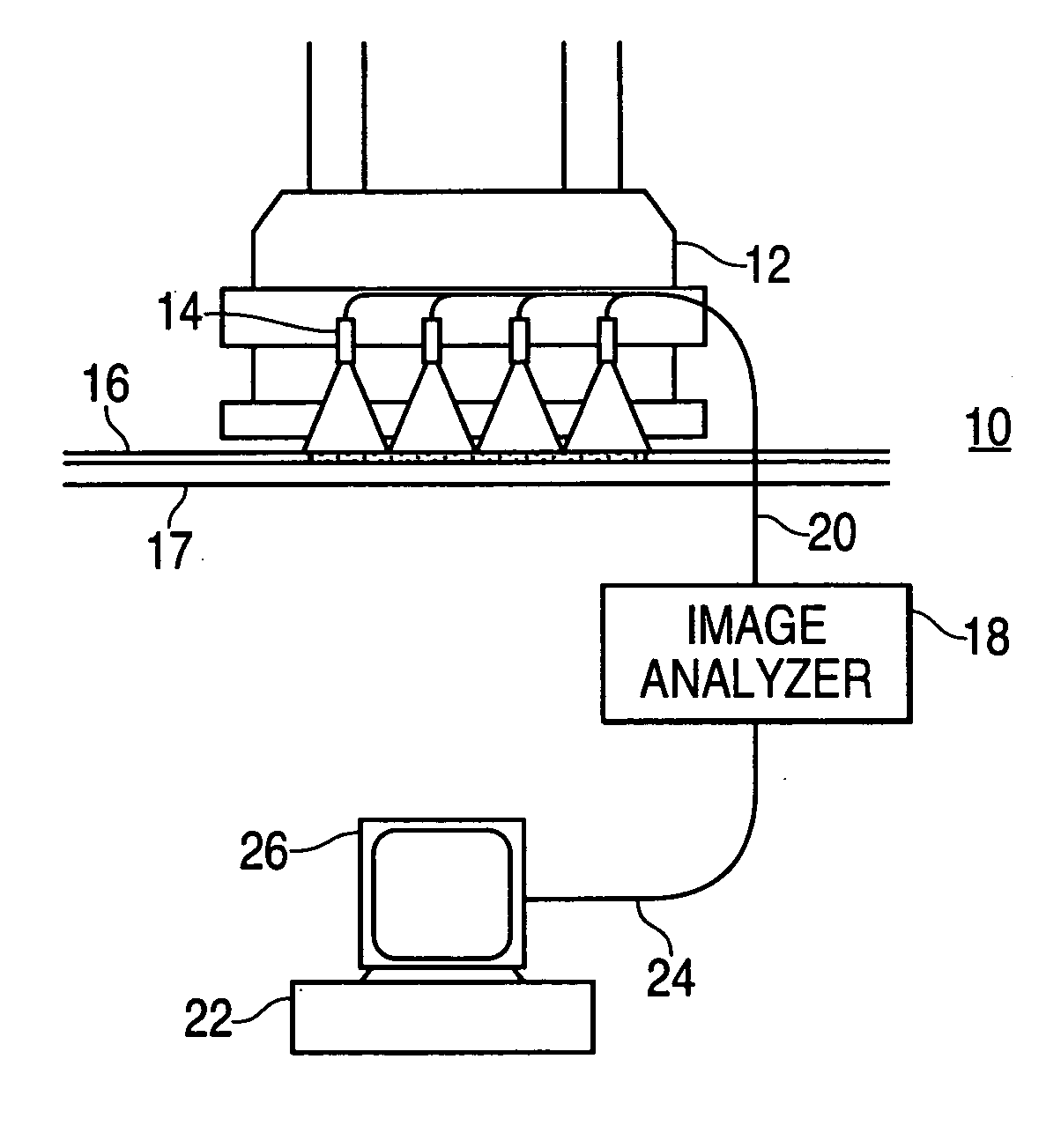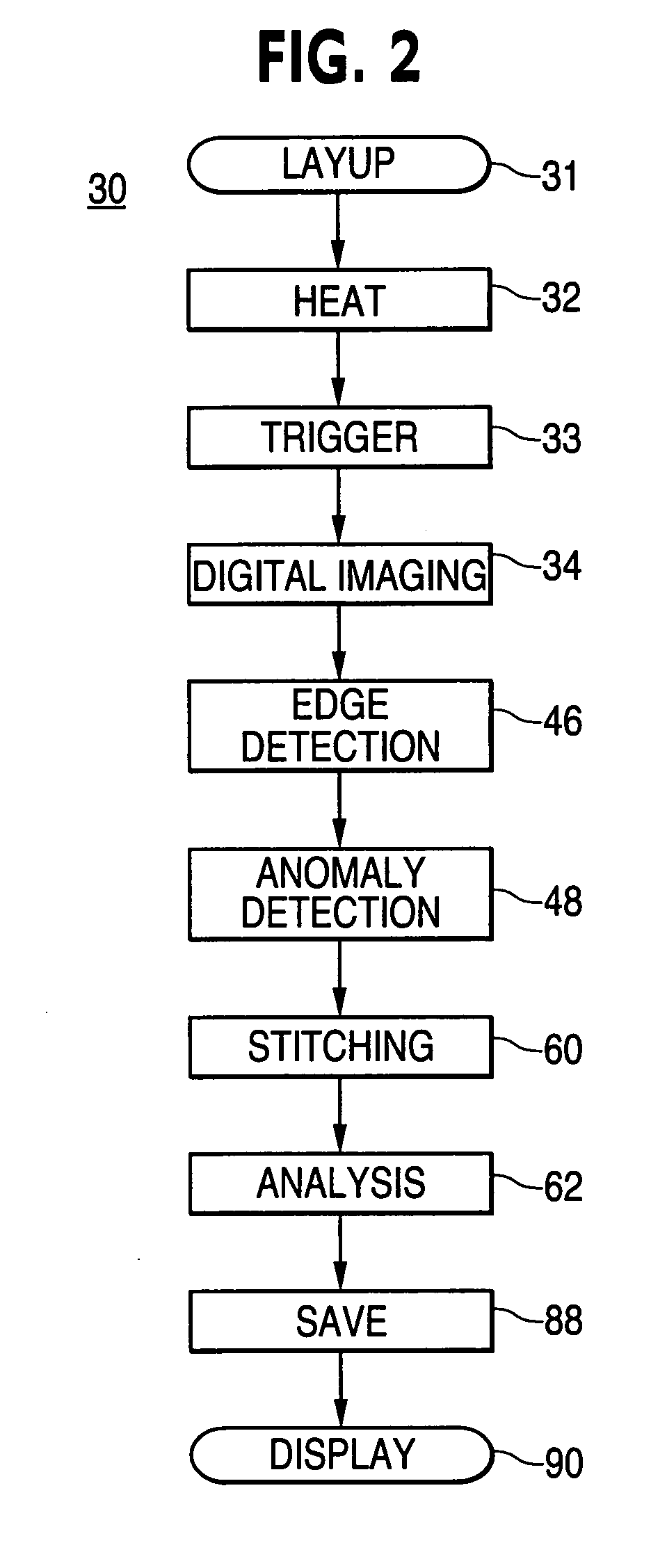Real-time infrared thermography inspection and control for automated composite material layup
a composite material and infrared thermography technology, applied in the direction of optical radiation measurement, instruments, image enhancement, etc., can solve the problems of excessive gaps, ineffective detection of resin or fiber, and laborious manual inspection to perform this task during layup, etc., to achieve the effect of small variations in the surface of the material
- Summary
- Abstract
- Description
- Claims
- Application Information
AI Technical Summary
Benefits of technology
Problems solved by technology
Method used
Image
Examples
Embodiment Construction
[0020] Infrared thermal imaging, also known as thermography or photothermal inspection, methods and devices make it possible to perform nondestructive testing of a material to detect defects, variations in the properties of the material, or differences in thickness of a coating or layer of the material. Infrared thermal imaging can detect local variations in thermal diffusivity or thermal conductivity at or beneath the surface of the material. Photothermal inspection can be used on metals, such as ferrous materials, including steel, or on non-metallic materials, such as plastics, ceramics, or composite materials.
[0021] Typically, the surface of the material is heated, for example with a laser or flash heating, and after a fixed period of time, a thermal image is taken of the surface of the material. An infrared camera images the infrared spectral radiance from the surface of the material, which is representative of the temperature of the surface of the material. Differences in temp...
PUM
| Property | Measurement | Unit |
|---|---|---|
| width | aaaaa | aaaaa |
| width | aaaaa | aaaaa |
| width | aaaaa | aaaaa |
Abstract
Description
Claims
Application Information
 Login to View More
Login to View More - R&D
- Intellectual Property
- Life Sciences
- Materials
- Tech Scout
- Unparalleled Data Quality
- Higher Quality Content
- 60% Fewer Hallucinations
Browse by: Latest US Patents, China's latest patents, Technical Efficacy Thesaurus, Application Domain, Technology Topic, Popular Technical Reports.
© 2025 PatSnap. All rights reserved.Legal|Privacy policy|Modern Slavery Act Transparency Statement|Sitemap|About US| Contact US: help@patsnap.com



